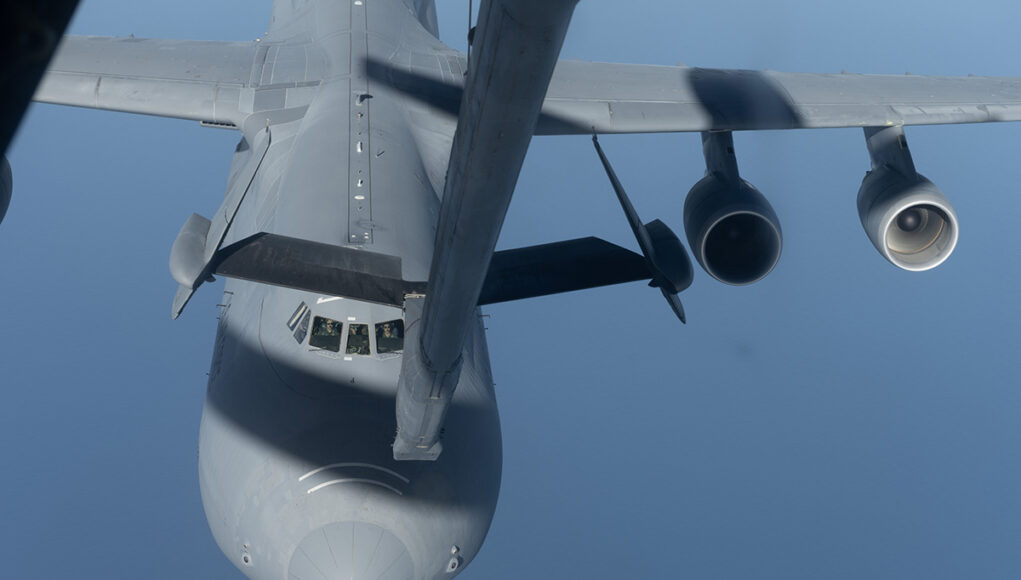An aircrew from the U.S. Air Force 22nd Airlift Squadron conducted a reverse flow air refueling training with a C-5M Super Galaxy and a KC-10 Extender over Northern California and Oregon, Dec. 12, 2023.
The reverse refuel is a proof of concept, designed to maintain readiness in emergency situations to prevent loss of a tanker aircraft.
“By using a C-5 as a huge floating gas station, it allows more tankers to be positioned for offloading to fighter or mobility aircraft, versus having to use one tanker to refuel another, which takes away a tanker asset from the mission,” said U.S. Air Force Maj. Justin Wilson, 22nd AS chief of standards and evaluations and C-5M evaluator pilot.
“This allows more tanker aircraft in the theatre and extends their range or orbit time.”
According to Wilson, this was the first time the C-5M was used like this since its initial testing and certification. By conducting tests on this procedure, the aircrew successfully gathered data points that can be utilised in the future to enhance the range and capabilities of a tanker aircraft.
“By doing reverse air refueling, the aircraft is getting lighter at a quicker rate than if you were just flying normally, so the aircraft flies a little different,” said Wilson.
“The real difference is when it comes to the flight engineers.”
An in-flight refuel normally consists of a KC-10 or KC-46A Pegasus delivering fuel to another aircraft. In this exercise, the C-5M aircrew reversed the process with the help of a KC-10. The C-5M offloaded 23,500 pounds of fuel in approximately thirty minutes to the KC-10.














I wonder if this is something that could be implemented on a boom equipped voyager and scaled up to a more usable transfer rate 1000kg/min?
I am hopeful that the carriers will be implemented an angled catapult within the next decade. If we could procure a simple bare bones UAV with the sole mission of getting fuel from the deck into a revese refueling boom we could use voyagers to top off other assets withing the vicinity of the carrier weigetail, p8 , rc135, c17, a400, ect extending their range/endurance.
Back to reality we would be lucky to get any kind of boom on the voyager.
An aircraft specifically to refuel aerial refuelers? How far are you going to take that? “Commander, our stage 15 refueler has developed a mechanical issue, are you willing to use a stage 7 as a backup?
As an aside, I think this is a much more realistic expectation of carrier-launched fuel carriers, with the ability to extend the range of strike wings without breaking the bank. I don’t know whether it would be possible to maintain the Voyager over the carrier indefinitely, but even the ability to ferry fuel around would be useful.
I don’t know how long you could keep a voyager airborne as far a maintainace and fluids are concerned. The American E4 is allegedly 6 days and is based on a 4 engine 70s era jet. Could a voyager do the same with modifications and how much cash would we have to spend 🤔?
This could be something that suits the us navy in the Pacific in allowing their p8 to operate with the carriers for extended patrols.